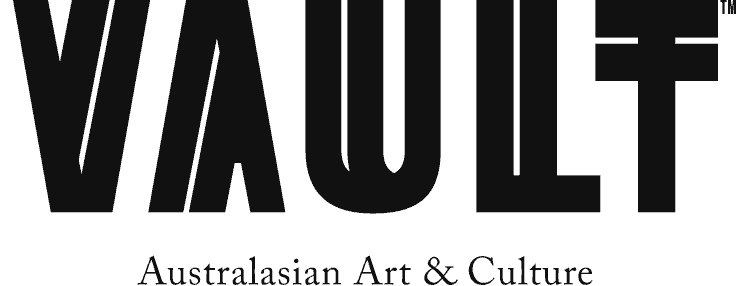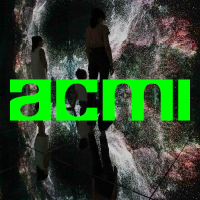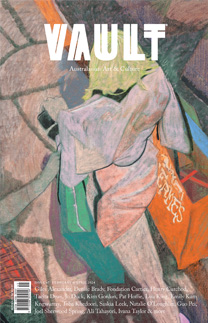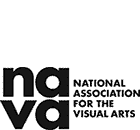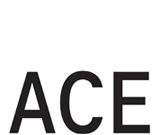Viewing Art in the Time of COVID-19: An extended edit of the feature from Issue 31, 2020
It’s a brave new art world. Adapt or die. Harriet Flavel gives VAULT an initiation into all things digital as galleries and artists accept the new norm. More interesting to me is this question: will the art world’s digital revolution be for the many or the few?

Image credit: Mona Lisa: Beyond the Glass, Musée Louvre, Paris, France, VIVE Arts, and Emissive
It’s a brave new art world. Adapt or die. Harriet Flavel gives VAULT an initiation into all things digital as galleries and artists accept the new norm.
Does art imitate life, or does life imitate art? To look at the industry and culture of art – the ‘art world’ – we certainly see reflected the values and power structures of wider society. What, then, of change? Digitisation has transformed society, rendering the realm in which we live unrecognisable from that of only a decade ago. Digitisation in and of the art world, however, has not been so swift nor determined. When we walk about digitisation, we talk about democratisation, lowered barriers to entry, transparency and often sustainability, which are decidedly not the priorities of the exclusive, opaque, academic and globe-trotting art world. We consider art progressive and enlightened, but its industry and culture are not. And so, art’s digital revolution has lagged, its opportunities and proponents a fiery ember which no-one in power was eager to stoke … Perhaps until now.

Image credit: Mona Lisa: Beyond the Glass, Musée Louvre, Paris, France, VIVE Arts, and Emissive
Where Have We Been?
Avoiding a full digital revolution, the art world has instead carried out marginal digital experimentation, although the efforts have been somewhat ‘lite’. First came the digitisation of public and private collections, which is not ubiquitous, even now. Then came Instagram and, with it, extensive arguments over cropping images, copyright and reproduction rights, its promise hobbled by precedent and the conventions of a landscape dominated by artist estates. More recently, we have experienced something of an overcorrection, with some fumbled attempts at engaging with meme culture (sorry, LACMA). ‘Innovation’ in the art world has meant forgoing physical invitations for email invitations and Facebook events, and sending ‘PDF previews’ (PDFs of Word documents with images) of artworks and exhibitions via email. The most innovative organisations forwent printed room sheets or walking sheets in favour of PDFs or audio tours hosted on their websites, hesitantly experimented with online sales platforms Artsy, Artnet and Ocula, and maybe even had an online store for merchandise and prints. Experiments with apps have been largely unsuccessful, whether in institutions developing their own (à la MoMA) or organisations making use of third-party apps (including Art Logic’s Private Views, which many commercial galleries experimented with before reverting back to emailed PDF previews).
All of this is to say that, until recently, if you could not visit an artwork or exhibition in person, your options for viewing it were limited. Specifically, they were limited to a flat representation – photographs. For the art world diaspora – those located outside of New York, London and other major international art world hubs – viewing art primarily through photographic (and/or printed) reproduction is an historic tradition, dating back centuries. Indeed, this condition has informed much wider artistic discourse. Yet efforts to ‘disrupt’ the status quo, in other industries rife, have been non-existent in art – perhaps, that is, until the novel coronavirus pandemic threatened the livelihoods and very existence of even the most powerful and best resourced in the art world.
What Came Next: Online Viewing Rooms and Not Much Else
The new leading lady is a natural progression from the plane (and plain) offerings of before – what has been dubbed an ‘Online Viewing Room’ (OVR). This term has taken hold only recently in the industry, after commercial galleries across the world were forced to experiment with a variety of alternatives. Galleries have eschewed referring to these offerings as ‘exhibitions’, wary of the curatorial and space-based connotations, and of audience expectations. Similarly, galleries have moved on from referring to these offerings as online, digital or virtual ‘presentations’ in our current condition, finding the term to lack an adequate sense of occasion. ‘Online Viewing Room’ makes use of language that galleries’ collectors are familiar with – the smaller, pristine private ‘viewing rooms’ at many commercial galleries that are reserved for the purpose of hanging and presenting works for visiting VIPs. Of the available options, ‘Online Viewing Room’ most evokes a sense of 3D space and of viewer transportation, suggesting that the screen through which it is experienced might be more than just a collection of pixels; instead, it becomes a portal to something new and unique. In so doing, the name implies both exclusivity and substance, without explicitly committing to either.
So, what exactly is an OVR? You are forgiven any confusion, as the rather general term encompasses all manner of online offerings, from digital ‘versions’ of ‘in-real-life’ (IRL) programming to online-only exclusives and other special projects. Temporally, they may align with an organisation’s other programming, or with art fairs, awards, biennials or major institutional exhibitions. As far as content, OVRs range from straightforward single web pages featuring digital photographs of artworks and basic artwork details, through to entire websites luxuriant with editorial content in photo, video, audio and text. On the spectrum of these offerings, an OVR with a lower production value can be somewhat underwhelming to audiences. In a much-reshared Instagram post on March 22 2020, art world darling JiaJia Fei (@vajiajia) riffed on @dudewithsign’s viral meme format to share that, “gallery online viewing rooms are just websites.” It is not an unfair statement – to viewers, OVRs without installation images or mock-ups of the artworks to scale and in situ can feel flat and entirely 2D.
The OVRs that provide the best audience experiences are those that offer a sense of 3D space while also utilising the narrative potential of the format. Three-dimensionality is best conjured by showing artworks to scale and in situ – which is most often done by ‘installing’ them in a computer-generated (CG) virtual room and pairing them with designer furniture. Rich storytelling is easier achieved by mega-galleries with in-house research and content departments, who have the resources to create, commission and pull together editorial content not just about the overall offering, but also about each individual artwork. A brief artist statement and a standard press release can’t compete with this. Yet few of the mega-galleries with the resources to create full-bodied online offerings have done so before now (and only now because they have no other option). Those that have – namely, David Zwirner and Gagosian – have set the gold standard for OVRs in terms of image quality, UI/UX and depth of content, and have rebranded themselves as leaders in the art world’s digital revolution. This is particularly true of transparency in artwork pricing and availability which remains, for many galleries, an appalling proposition.
In 2017, David Zwirner was the first major gallery to launch an OVR. Dedicated to La Biennale di Venezia, it featured artworks by Zwirner’s artists across different pavilions and sites in Venice, artworks that Zwirner could not present in their own IRL gallery locations. With six physical gallery spaces across Europe, Asia and the United States, Zwirner refers to their OVRs as their ‘seventh space’. They have presented over 50 OVRs since 2017, with strong sales reported and no signs of slowing down. Gagosian followed Zwirner’s lead in 2018, launching their own OVR after successes in the year prior with their online store and Artsy partnership. Yet in these few years – from 2017 to today – few organisations in the art world made moves to present artworks, exhibitions or experiences online, digitally or virtually.

Image credit: Koo Jeong, Destiny from the series Prerequisites 7), 2019, London at Frieze Sculpture augmented reality. Courtesy the artist and Acute Art
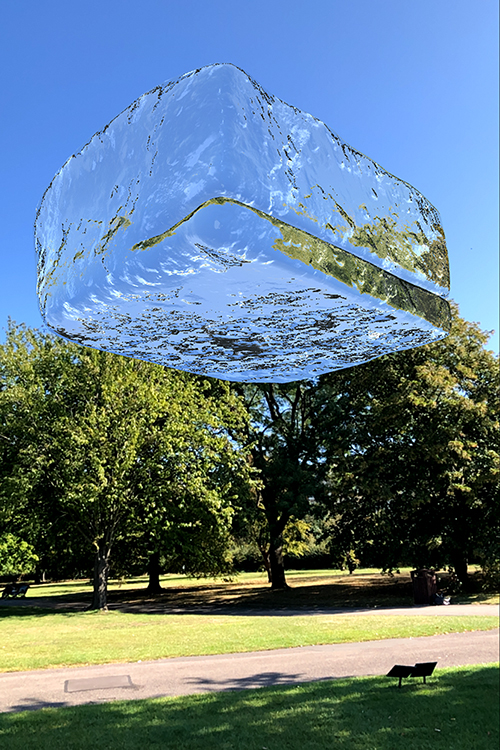
Image credit: Koo Jeong, Destiny from the series Prerequisites 7), 2019, London at Frieze Sculpture augmented reality. Courtesy the artist and Acute Art
Immersive Experiences
In those few years we witnessed an interesting paradox, as the art world’s presence on social media (Instagram, specifically) skyrocketed and, alongside it, the popularity of immersive, experience-based artworks and exhibitions. Organisations who could or would not digitise their collections or other offerings hustled to present Instagram-friendly artworks and exhibitions. At the top of the charts were (and are) the artworks of veteran installation artists – chief among them Yayoi Kusama’s Infinity Rooms, Olafur Eliasson’s Room for one colour (1997), and more or less anything by James Turrell. Several relative newcomers made a name for themselves, including Refik Anadol, teamLAB, Meow Wolf and Marshmallow Laser Feast. Several spaces dedicated to immersive art experiences – some even dedicated to art/tech experiences – popped up across the world, including ARTECHOUSE and the expansion of Culturespaces, with the additions of its Atelier des Lumières and Bassins de Lumières sites to its Carrières de Lumières. These artworks, exhibitions and organisations competed for ticketed entry – and Instagram posts, tags and likes – with blockbuster museum shows geared towards immersion, like the Musée des Arts Décoratifs’ breathtaking Christian Dior, couturier du rêve (2017), and family-friendly celebrity favourites like the San Francisco-born Color Factory and the New York-born Museum of Ice Cream. The success of these experience-based offerings signified an audience gravitation toward ‘real’ experiences, and offered the art world convenient evidence that online, digital and virtual artworks, exhibitions and experiences were not of interest to their masses.
The Future is Now: Extended Reality (XR)
So, for the most part, robust online, digital and virtual offerings have largely eluded the art world – at least until recent years. In other industries, creators and audiences have turned to Extended Reality (XR) for truly immersive experiences. (A brief aside: Extended Reality is an umbrella term that covers Virtual Reality (VR), Augmented Reality (AR) and Mixed Reality (MR).) The field is intimidating, developing at warp speed and flooded with buzzwords, only truly understood by a small but growing group of specialists. These specialists – interaction designers, developers and neuroscientists – develop experiences, products and services using what we know about how the brain receives information from the senses, how the brain determines what is ‘real’ and what is not and how our bodies respond.
Setting aside the art world’s overall slow and hesitant embrace of the digital realm, its recalcitrance regarding XR specifically has not been without good reason. For decades, XR’s promise has been hindered by the same two major hurdles that plague the uptake of the technology writ large, albeit with some specific art world permutations. First: how to create or capture the content – artworks, exhibitions and experiences – from a pixel-level up, including gallery space, frames, plinths and all other details. Second: how to display the content to an audience. These hurdles are technological and logistical in nature, and surmounting them has required creativity, risk-taking and especially deep pockets.
Let’s begin with content. ‘Capture’ and ‘render’ are the two key terms here, referring to how an artwork, exhibition or experience is created to be viewed in XR. First, the environment: imagine an empty gallery space with white walls and polished concrete floors. To create this space, there are two options: capture (use a combination of photo or video techniques with some post-production) or render (computer-generate the space). Choosing between these options is a matter of what you want to achieve, how much you can spend and what logistics permit. If you choose capture, techniques (and buzzwords) you will hear about include photogrammetry, light field capture, volumetric capture and 360 video. The output from these techniques ranges from an impeccable, true-to-life virtual space a viewer can freely move around in – without distortion and with the option to view individual artworks from all angles – to a relatively static 3D experience in which a viewer teleports between hotspots, comparable to navigating a Street View on Google Maps (albeit more beautiful and private). Most popular here is Matterport’s 360 video, but its relative affordability comes at a cost to quality and viewer experience. Because of the expense and expertise associated with achieving high-end capture output, rendering a space can make much more sense than capturing it, striking a balance between quality of experience (and subsequently, the level of viewer immersion) and expense.
Now that we have our space – whether captured or rendered – we need to fill it. In order to faithfully present physical artworks as they were created by artists, they must be captured, rather than rendered. The exceptions here are works that exist adequately in digital format, usually untextured 2D works in moving image and photography. These must be ‘placed’ in the space – and in doing so, framed or otherwise ‘installed’ appropriately through rendering – but are generally the simplest to present. 3D artworks benefit the most, in my experience, from being captured and displayed, as they can be viewed in the round, rather than from a single angle in a flat image. In XR, these 3D artworks can also be viewed at as close a distance as a viewer desires – much closer than would be possible or safe IRL. But 3D artworks can present challenges (specific to size, weight and materials) in their capture, requiring varying degrees of post-production in order to be faithfully represented in XR (think: texture, colour, reflections, etc.). In this respect as in others, the individuals who do this work – usually referred to as developers – must be regarded as artists themselves, which will undoubtedly be a challenging proposition for many artists and arts organisations, even if the purpose of this work is to present an artwork as faithfully as possible. The captures that require the most correction in post-production, and therefore the most assistance by developers, are those of textured 2D artworks – mostly paintings. Textured 2D artworks are also the most challenging to capture, making them overall the most challenging works to present in XR. In terms of technique, mastering the accurate and efficient capture and presentation of textured 2D artworks is the next frontier in the field.
The leader in this area is ARTMYN, a small, pioneering Swiss art/tech start-up that bills itself as presenting in 5D. To view their works online – possible on their website, as well as those of partners including TAJAN and Sotheby’s – one understands why. Its specific mandate is to create interactive images that bring to life an artwork’s texture and composition. Take, for example, Marc Chagall’s Le Printemps (1975), captured by ARTMYN for a Sotheby’s online auction in 2017. Le Printemps is presented in stunning detail and with an interactive view, enabling the viewer to, as Invaluable chief executive Rob Weisberg remarked to the Financial Times’ Melanie Gerlis, “fly between individual brushstrokes on a painting and see everything in microscopic detail.” Significantly, ARTMYN presents the output of its captures online, powered only by the web (no app or special software download is required) – a feat few others have come close to achieving. Thus, in one fell swoop, ARTMYN sails over the twin hurdles of content and display that hobble its competitors in XR for the art world. However, their work so far has been in large part for auction houses, and so more in service of sales and authentication than of experience or exhibition. It has been perhaps easier for sales-focused organisations – auction houses and art fairs among them – to ‘go digital’, without the pressure its industry peers feel to approximate the experience of an artwork or an exhibition for their audience.
Now, from XR’s first hurdle, content, to its second: display. Each type of XR requires different technology and devices for the display and experience of content. VR is typically presented on Head-Mounted Displays (HMDs), colloquially referred to as headsets. Google’s HTC, Facebook’s Oculus, Samsung, PlayStation and other major hardware companies continuously race to release and manufacture headsets at a range of price points for producers and consumers across industries including gaming, technology, medicine, education, fashion and art. A small number of boutique hardware companies, including Varjo and Valve, produce ultra-high-quality headsets for the luxury end of the market. All told, price points range from the roughly $10 Google Cardboard through to headsets priced well over $10,000. While you more or less get what you pay for, the technology has been developing at pace, discouraging volume purchases at the higher end of the market. If you are in the market, the Oculus Quest and Oculus Rift S are widely regarded as the best options, all things considered, and will remain that way for at least another year. However, the majority of all headset production happens in China, and Oculus’ headsets have been on backorder since February due to the COVID-19 pandemic.
But it’s not as easy as trading one headset for another, and not just because almost every other manufacturer’s headsets are on backorder too. Without getting too technical, each headset has its own set of requirements and limitations. This is where you’ll hear words like ‘tethered’ and ‘untethered’ (headsets with a cable versus without, the former providing much higher quality but the latter providing significantly freer movement), as well as debates over ‘tracking’ (how the headset determines where you ‘are’ in a virtual space). Each headset runs or runs best on different software and therefore VR experiences have, historically, been custom-built for a type of headset in order to maximise the quality and stability – and therefore the immersive-ness – of an experience. The VR industry has been tackling these issues around the availability and expense of hardware for several decades, although not with much success.
With the right team, the right combination of technology and techniques, and deep pockets, art institutions and art/tech start-ups have achieved ambitious individual projects in VR and AR in the last few years. In October last year the Louvre, in partnership with VIVE Arts and Emissive, unveiled their first VR project: Mona Lisa: Beyond the Glass, an experience made available in-person at the gallery and for all with access to a VR headset (via the headsets’ App Store equivalents). The notorious impossibility of viewing the Mona Lisa both alone and up close emphasises one of the opportunities offered by VR: a private, intimate moment of contemplation with an artwork from anywhere in the world, a truly immersive and otherwise impossible experience. Mona Lisa: Beyond the Glass formed part of the Louvre’s major Leonardo da Vinci exhibition, presented on the 500th anniversary of da Vinci’s death. The Louvre used this milestone, and the VR experience, to share decades of conservation research and data with viewers, including infrared scans, how the work was created, how its appearance has changed over time through exposure to light, humidity and restoration, as well as to explore the identity of and dispel myths around the painting’s subject. This VR experience enabled the Louvre to extend the walls of the gallery and the lifetime of the exhibition, to loosen the bottleneck around viewing the Mona Lisa and to uphold the innovative, pioneering spirit of its painter. The home version of Mona Lisa: Beyond the Glass extends the experience for viewers across the globe, entering through the iconic Pyramid and visiting da Vinci’s paintings in the Louvre’s collection in addition to the layered experience of the iconic painting.
XR is as suited to presenting such historical artworks, exhibitions and experiences as it is to contemporary ones. Acute Art, a London-born art/tech start-up, is an XR production house that partners with major artists to create new works in VR and AR. Their platform – with apps for headsets, smartphones and tablets – enables viewers with the technology to access these artworks and experiences from anywhere. Their projects have been a veritable who’s-who of the art world – Marina Abramović, Anish Kapoor, Cao Fei, Olafur Eliasson, Koo Jeong A, Christo and Jeanne-Claude, Jeff Koons, KAWS and Antony Gormley among them. Christo and Jean-Claude’s towering The London Mastaba was installed in the Serpentine Lake in Hyde Park in 2018. Acute Art worked with the artists to capture the sculpture, in situ, in order to present it in VR for audiences across the globe, via their own headsets, smartphones, tablets and the associated Acute Art apps. Acute Art worked with the artists to capture the sculpture, in situ, in order to present it in VR for audiences across the globe, via their own headsets, smartphones, tablets and the associated Acute Art apps. But – perhaps piggy-backing on the wider spread of AR through everything from Instagram Stories and Snapchat filters to Pokémon Go – Acute Art has focused its efforts in AR, which sidesteps VR’s display hurdle by being viewable first and foremost through smartphones and tablets, making use of their inbuilt cameras to bring the artworks to life. VR must be adapted to be viewed outside of headsets; AR is designed to be viewed outside of headsets. AR is then (currently) not only set up to reach much wider audiences, but is also able to move with those audiences, offering up the potential for site-specific artworks, exhibitions and experiences. In late 2019, Acute Art presented Koo Jeong A’s density in The Regent’s Park as part of Frieze Sculpture. Using a smartphone or tablet and Acute Art’s app, viewers located in the Park conjured the AR sculpture through their device. density, a shimmering, floating, opaque ice cube, moves with the viewer, reflecting and refracting the shifting surroundings in real time. (Since the time of writing, The London Mastaba has been re-released in AR.)
AR engages with viewers by asking them to play an active role in its materialisation, offering a degree of play and a dimension of audience engagement that is not commonplace in the art world. But XR offerings that take viewer experience further are those that engage with and reflect on the medium. These tend to be artworks, exhibitions and experiences created for XR, rather than those simply created in XR. Perhaps the best example of this is Jordan Wolfson’s Real Violence, presented in 2017 at the Whitney Biennial. The 2-minute-25-second meditation on violence had the long lines that are a hallmark of VR headset experiences, with each headset acting as a one-person bottleneck. The long line, however, moved quickly, as few could bear the ultraviolent, bloody work for even half a minute. As such, the artwork simultaneously demonstrated our collective disdain for violent action and the reflexive manner in which we look away.
But for less ‘meta’ artworks, and for VR in general, finding options to display and view artworks, experiences and exhibitions outside of headsets is essential to reaching audiences, and to its propagation in the art world. To this end, there are experimentations with different methods of projection, including holograms and the Cave Automatic Virtual Environment (CAVE) or ‘VR cave’. Both display methods have existed, in some form or other, for decades, and are both being eyed for their potential to counter some of VR and XR’s challenges. And yet others remain fixed on resolving the issues of display through improving and expanding access through personal devices. Vortic XR, a London-based start-up, makes its VR offerings available on headsets, but its end game is decidedly smartphones and tablets. While others present individual artworks and experiences in XR, Vortic specialises in presenting exhibitions, and artworks, in situ, all at unprecedented quality. Galleries experimenting with the platform include David Zwirner, Pace, Sadie Coles HQ and Victoria Miro. Some galleries see the benefit in presenting on a third-party platform with multitudes of galleries (à la Vortic and its peers in CG (KUNSTMATRIX) and 360 video (Artland), as well as Artsy, Artnet, and Ocula), but others, including Hauser & Wirth, have focused on developing and launching their own branded platforms to present exhibitions and artworks in situ.
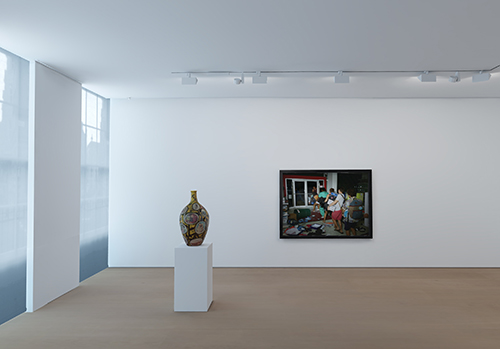
Image credit: VR Representations of David Zwirner’s and Victoria Miro’s London Galleries, from Side by Side: A Presentation by Victoria Miro and David Zwirner on the Voric Curate App. Featuring work by Chris Ofili , Alice Neel, Stan Douglas and Grayson Perry. Courtesy Victoria Miro and David Zwirner
Community, Accessibility and the Roles of Institutions
The question that is being asked throughout the art world is: can OVRs, XR and other online, digital and virtual offerings ever meaningfully recreate or replace the experience of going to an exhibition, a gallery, or otherwise viewing an artwork in-person? This question seems, to me, largely abstract at present; simply put, nobody knows the answer and only time will tell. More interesting to me is this question: will the art world’s digital revolution be for the many or the few?
Whether via third-party platforms or those developed in-house by arts organisations, presenting in VR and in wider XR still requires a heady amount of resources – and therefore usually institutional or commercial support – thereby reinforcing existing power structures. So where might we find the democratisation promised by digitisation? Depending on your level of scepticism, one example might be Platform, an initiative launched by David Zwirner in the wake of the novel coronavirus pandemic. At the beginning of April, as galleries were forced to shutter, Zwirner presented the pilot of the program, hosting presentations by 12 New York galleries. Platform is now in its fourth iteration, offering galleries in Paris and Brussels the same opportunity, after also doing so for galleries in Los Angeles and London. Sotheby’s recently launched its Gallery Network, a similar initiative. A key difference is that Zwirner’s Platform takes no commission from the sales, while Sotheby’s Gallery Network does.
There are many, of course, who consider the gallery system, and the existing hierarchies of the art world, beyond broken. In the current landscape, artists may be interested in trying to forgo representation. It will be interesting to see how this bears out, whether (or how) artists are able to build successful careers without the exposure, structure, support, access and professional development ostensibly provided by commercial representation, and how audiences respond, especially to the works of emerging artists and artists working in digital. So, what opportunities might artists leverage instead? A slate of organisations are working to lower the barriers to entry, support experimentation and provide sales platforms for artists at low-to-no expense.
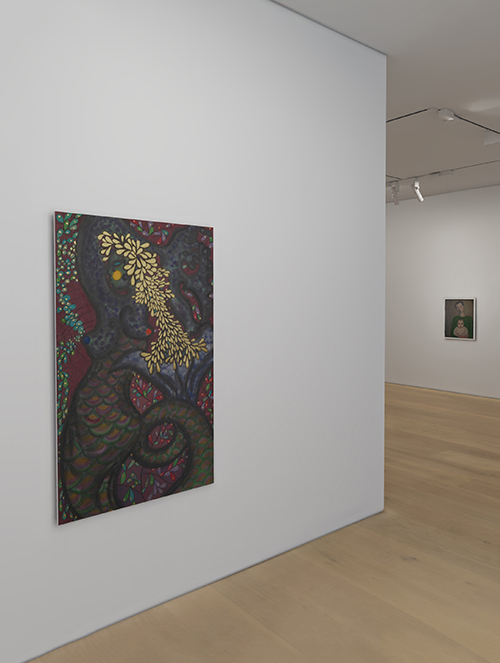
Image credit: VR Representations of David Zwirner’s and Victoria Miro’s London Galleries, from Side by Side: A Presentation by Victoria Miro and David Zwirner on the Voric Curate App. Featuring work by Chris Ofili , Alice Neel, Stan Douglas and Grayson Perry. Courtesy Victoria Miro and David Zwirner
Occupy White Walls is an online platform that aims to provide a service of the same nature as Vortic and its ilk for free, democratising the process of presenting and buying art. On Occupy White Walls, artists, curators and anyone else so inclined can present art by themselves or by others, create exhibitions and sell their own artworks. Few online, digital and virtual ventures in the art world are so noble – and few, as yet, meaningfully engage with or attempt to approximate the social and community dimensions of the art world. Animal Crossing: New Horizons, a social simulation video game for the Nintendo Twitch, does not share the radical mandate of Occupy White Walls, but it does share some of its DNA. After users worked to present artworks by themselves and by others (including Marlene Dumas) within the game, institutions including the Metropolitan Museum of Art made their collections freely available for users to hang and interact with in their virtual spaces.
Animal Crossing was banned in China after some players used the game to protest government policies regarding Hong Kong. It may be in China that we see the most stark disconnect between the progressiveness of its art and artists – many of whom are political dissidents, speaking out about the country’s acts of censorship and its human rights violations – and the conservatism of its ruling powers and of its arts institutions, who largely tow the party line. Yet many of China’s arts institutions are leading the world in their pro-digital stance, demonstrating that Western ‘progressive’ ideals and digital revolution are not mutually exclusive.
From the beginning of the novel coronavirus pandemic, art institutions in China mobilised across a wide range of social media and digital platforms, with official accounts and mini-programs on WeChat, Weibo and Taobao Live, in addition to live-streaming, online classes, presenting collections online, and virtual exhibitions and tours. Yet most pioneering has been its use of Douyin, the Chinese version of the newly popular short-video platform TikTok. Like TikTok, Douyin is used for sharing dance routines and pet videos, but it is unique in its popularity for short videos about art and culture. In 2019, there were 543 billion art-related views, and China’s national cultural heritage sites received a staggering 3.33 billion ‘likes’. As yet, few Western organisations have experimented with the platform, partially because it is not possible without partnering with a Chinese organisation. The Metropolitan Museum of Art, however, rolled out campaigns on both TikTok and Douyin for its 2019 Met Gala, partnering with the Chinese Alfilo Brands. On Douyin alone, they received 170 million views in 48 hours. Success on Douyin (or on TikTok), however, requires a flawless hand at social media, moulding a platform-specific dimension of an artist or organisation’s voice and branding both successfully and authentically.
Whether smashing the art world’s power structures or working within them, leading digital strategist Süreyya Wille encourages experimentation on this new frontier: “This is fundamentally new terrain, and that's what should be driving ideas and innovation. Your online presence will never faithfully replicate your offline presence – and that should not be the goal.” In this vein, artists and organisations alike may consider offerings that simply could not exist in person. It opens the art world up to new spaces that do not have an IRL presence at all; what might a purely digital or virtual space look like, and what programming might it present, free of the constraints and overheads imposed on a brick-and-mortar space? How might any artist or organisation play with scale, juxtaposition, curation and programming in an online, digital or virtual offering, free of so many of the usual constraints? How else might we measure audience engagement and ‘success’?
What was it that Darwin said about survival? It is not the strongest who will survive, but those most responsive to change. Or, as W.E. Demings put it: it is not necessary to change; survival is not mandatory.
Harriet Flavel is a digital strategist, producer and writer based in London.
Representation and gallery details/websites
Acute Art
Vortic XR
Occupy White Walls
Animal Crossing
Douyin
harrietflavel.com
... Subscribe
